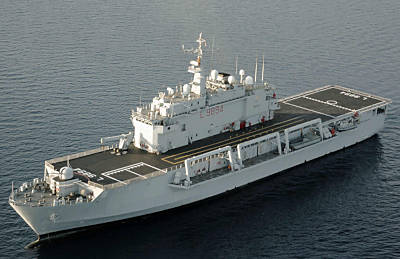WASHINGTON, Oct. 28, 2011 — After a three-day trip to Afghanistan, the top U.S. European Command and NATO military officer reported positive security trends and continued momentum in transitioning security responsibility to Afghan forces.
“Overall, the trip reinforced my sense that we are making good progress in the security sector,” Navy Adm. James G. Stavridis wrote in his “From the Bridge” blog after visiting Kabul, Kandahar and Wardak.
“I can see the progress,” the admiral wrote, “especially in the development of the Afghan security forces and the ongoing transition.”
Stavridis said his briefings with commanding generals in the Afghanistan’s southern and eastern sectors, where most of the security challenges lie, gave him cause for optimism. “It is clear that they have solid plans, sufficient forces and are making steady inroads into the insurgency,” he wrote.
For example, twice as many Afghan troops than coalition troops are serving in both the south and east, he noted. Meanwhile, enemy attacks are down 10 percent nationwide, and even more in the south and southwest.
“This is a big improvement over the past couple of years,” Stavridis wrote. The fighting season, he added, “has clearly been a disappointment to the Taliban,” who’ve been forced to take up a defensive posture.
Meanwhile, Afghan security forces are leading more operations, which Stavridis called “a good sign that the transition to Afghan-led security operations is well under way and working.”
Twenty-five percent of the Afghan population is now under Afghan lead for security, he noted. That percentage, he added, is slated to double within the next few months and ultimately to reach 100 percent by the end of 2014.
But even as this progress continues, Stavridis said, the insurgents’ ability to move across the porous Pakistan-Afghanistan border region continues to present “a serious challenge to our efforts.”
One of the most-striking impressions from his trip, he said, came when visiting a literacy training class for Afghan National Police recruits in Wardak province.
The training, conducted by the NATO Training Mission under in Afghanistan under the command of Army Lt. Gen. William B. Caldwell IV, is part of an ongoing effort to increase literacy among Afghan security forces. To date, 200,000 have been through or enrolled in the training.
Stavridis said he was impressed by the fast-paced coursework he witnessed, noting that the young police recruits are “hungry to learn.”
“This will be a very long, lasting contribution to the security and stability in Afghanistan,” he wrote.
Looking to the future, Stavridis recognized other challenges: governance, corruption that one Afghan observer called a “second insurgency” and economic problems, among them.
Upcoming international conferences in Istanbul and Bonn and the NATO summit in Chicago next spring will need to help in addressing these problems, he said.
Stavridis said he remains positive about Afghanistan.
“When I look back at where we were in the spring of 2009, I can see the progress — especially in the development of the Afghan security forces and the ongoing transition,” he wrote. “My sense at this moment is that there is indeed hope in the time ahead, along with all the challenges.”
Source:
U.S. Department of Defense
Office of the Assistant Secretary of Defense (Public Affairs)

 von
von 